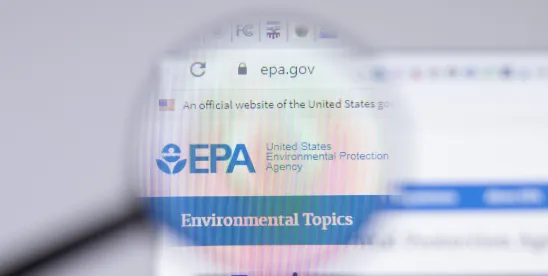In a significant move for environmental policy and energy innovation, the U.S. Environmental Protection Agency (EPA) has proposed to approve Texas’ application to administer its own Class VI underground injection well program. This decision, announced on June 9, 2025, marks a pivotal step in accelerating carbon capture and sequestration (CCS) efforts across the state and potentially the nation.[1]
Results of the EPA Announcement
The EPA’s proposal grants Texas the authority to issue permits for Class VI wells—specialized underground injection wells used to store carbon dioxide (CO2) deep underground. These wells are a cornerstone of CCS technology, which captures CO2 emissions from industrial sources and power plants and stores the CO2 underground, preventing it from entering the atmosphere.
Under the Safe Drinking Water Act (SDWA), the EPA typically oversees the permitting of these wells. However, states can apply for “primacy,” or the right to manage the permitting process themselves, provided they meet stringent federal standards. Texas’ application, led by the Texas Railroad Commission, has now received the EPA’s preliminary approval, pending a final rule.
Streamlining Permits and Boosting Investor Confidence
Once finalized, one of the most immediate benefits of this decision is the expected reduction in permitting times for CCS projects. Under federal oversight, the permitting process for Class VI wells has often been criticized for being slow and cumbersome, sometimes taking several years. By shifting control to Texas, which has decades of experience managing other classes of underground injection wells within their state, the process is expected to become significantly more efficient.
This streamlining is crucial for attracting private investment. Carbon capture projects are capital-intensive and require long-term planning. With Texas now poised to manage its own Class VI program, companies and investors can expect faster approvals, more accurate timelines, and more predictable regulatory outcomes.
A Catalyst for Carbon Capture and Sequestration?
The EPA’s move may not be just a bureaucratic shift—it can be a catalyst for broader adoption of CCS technologies and greater utilization of Texas well space. Companies engaging in CSS may qualify for tax credits, with benefits ranging from $17 to $180 per metric ton of CO2 captured.[2] However, investors may still want to proceed with caution: while the administration has taken steps to ease permitting and regulatory barriers, the 2026 federal budget includes cuts to several CCS-related funding programs, potentially limiting the financial viability of some projects.[3]
Texas, as a leader in both energy production and geological storage potential, is uniquely positioned to scale up CCS. Much of the state’s vast underground formations, particularly saline aquifers and depleted oil and gas reservoirs, offer ideal conditions for long-term CO2 storage. By enabling Texas to take the reins, the EPA may be clearing a path for a new wave of potential CCS projects. This could include retrofitting existing power plants, supporting industrial decarbonization, and even facilitating direct air capture (DAC) technologies that remove CO2 directly from the atmosphere. Still, the long-term success of these efforts may hinge on whether financial incentives can keep pace with the regulatory momentum.
Cooperative Federalism in Action
The EPA’s decision also reflects a broader philosophy of “cooperative federalism,” where federal and state governments work together to achieve shared goals. Administrator Zeldin framed the move as a return to this principle, emphasizing that states like Texas are best equipped to manage their own environmental programs.
This approach has garnered bipartisan support in Texas, with both federal and state officials applauding the decision. It also sets a precedent for other states seeking primacy over Class VI wells, potentially accelerating CCS deployment nationwide.
Looking Ahead
While the EPA’s proposal is not yet final, it represents a major milestone. A public comment period will follow, after which the agency will issue a final rule. If approved, Texas will join the growing list of states with full authority over Class VI well permitting, similar to the state’s management of existing Class I, II, III, IV, and V wells.
This development may spur rapid adoption of CCS technologies, not just in Texas but across the U.S. as the EPA continues to delegate authority to other states. Such changes promise faster project timelines, increased investor confidence, and a stronger foundation for meaningful climate action.
Footnotes
[1] https://www.epa.gov/newsreleases/epa-proposes-approve-texas-application-administer-class-vi-underground-injection-well
[2] https://www.rrc.texas.gov/about-us/faqs/oil-gas-faq/class-vi-wells-in-texas/
[3] https://www.whitehouse.gov/wp-content/uploads/2025/05/Ending-the-Green-New-Scam-Fact-Sheet.pdf




 />i
/>i
